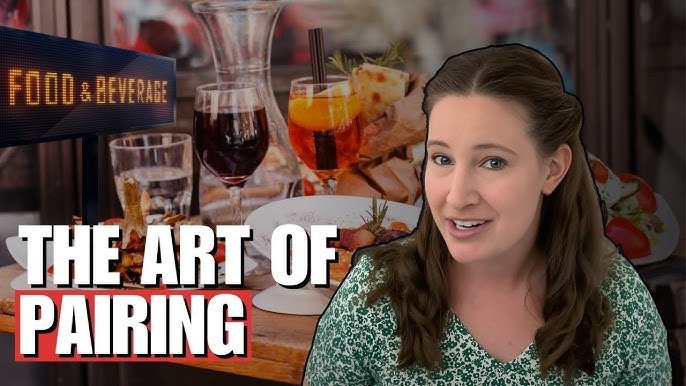Introduction: Why The Art of Pairing Matters
In the culinary world, the art of pairing is more than just combining food and drinks. It’s a creative process that balances flavors, textures, and aromas to elevate the dining experience. Whether you’re a seasoned chef, a sommelier, or a home entertainer, understanding the science and emotion behind good pairings can transform ordinary meals into memorable moments.
Table of Contents
What Is Pairing and Why Is It an Art?
At its core, pairing is about harmony. It’s the thoughtful matching of two or more components—usually food and beverage—to create a complementary or contrasting experience. What makes it an “art” is the sensory intuition required to make decisions that go beyond simple guidelines. Great pairing considers flavor profiles, cultural contexts, and even emotional resonance.
Foundational Principles of The Art of Pairing
Perfect pairings don’t happen by accident. Here are a few core principles:
- Balance: Avoid overpowering one component. Rich dishes pair well with acidic drinks to cleanse the palate.
- Complement: Match similar flavor profiles (e.g., buttery Chardonnay with creamy pasta).
- Contrast: Opposites can enhance each other—like sweet wine with salty cheese.
- Intensity: Match the intensity of the dish with the drink. A bold red wine can overwhelm a delicate salad.
Understanding these basics can help anyone start mastering the art of pairing.
Food and Wine: A Classic Study in Pairing
Wine is one of the most nuanced and traditional components to pair with food. A few timeless examples include:
- Red wine and red meat: Tannins in red wine soften the fat in meats.
- White wine and seafood: Crisp whites cleanse the palate and match the lightness of fish.
- Sparkling wine and fried foods: Bubbles cut through oil and refresh the taste buds.
When practicing the art of pairing, wine offers endless opportunities for exploration and discovery.
Cheese and Beverage Pairings Beyond Wine
While wine and cheese are a famous duo, other beverages like beer, tea, or even whiskey can be surprisingly good partners:
- Aged cheddar and IPA: The bitterness of the beer enhances the sharpness of the cheese.
- Goat cheese and herbal tea: Light, floral notes bring out the creamy tang.
- Blue cheese and port: Sweet, fortified wines balance strong and salty flavors.
These combinations demonstrate how the art of pairing reaches far beyond traditional expectations.
The Rise of Non-Alcoholic Pairings
With the rise of wellness culture, many are now exploring alcohol-free pairings. Non-alcoholic wines, craft sodas, kombuchas, and even sparkling waters can be carefully selected to enhance meals.
- Spicy food with cucumber soda: Cooling and hydrating.
- Fruit tarts with hibiscus tea: Tart meets tart in a refreshing blend.
- Roasted veggies with ginger kombucha: Earthy and zingy.
The evolution of the art of pairing is becoming more inclusive and health-conscious.
Global Perspectives on Pairing
Around the world, cultures have long practiced pairing without formalizing it. In Japan, sake with sushi is not just tradition—it’s a harmony of umami and texture. In Italy, Chianti with tomato-based pasta balances acidity. In India, masala chai with fried snacks contrasts bold spices with creaminess.
Recognizing these time-honored customs can deepen your appreciation for the art of pairing across borders.
Pairing by Season: Let Nature Guide You
Seasonality plays a major role in pairing:
- Spring: Light wines and fresh greens or citrus.
- Summer: Rosés, grilled meats, and watermelon feta salad.
- Autumn: Full-bodied reds with squash, mushrooms, and roasted meats.
- Winter: Spiced cocktails and comfort foods like stews and creamy dishes.
Letting the seasons guide your pairings adds a layer of relevance and sensory connection.
The Emotional Side of Pairing
Beyond the technical aspects, the art of pairing taps into emotion. Comfort foods with nostalgic drinks, celebratory pairings for milestones, or aphrodisiac combinations for romance—all engage the heart as well as the palate.
Thoughtful pairing enhances not just taste, but also storytelling, mood-setting, and memory-making.
Mistakes to Avoid in Pairing
Even with experience, common missteps can occur:
- Ignoring texture: Creamy dishes need crisp drinks to avoid heaviness.
- Forgetting sweetness: Dessert wines must be sweeter than the dessert.
- Overcomplicating: Simple pairings often work best—don’t force novelty.
Learning from these mistakes is a key part of refining your approach to the art of pairing.
Pairing at Home: Tips for Everyday Elegance
You don’t need to be a chef to master pairing at home. Here are a few practical ideas:
- Build a flavor wheel: Start with your main ingredient, then add complementary notes.
- Keep a pairing journal: Track what worked and what didn’t.
- Taste side by side: Compare multiple pairings with one dish to educate your palate.
Even a simple weeknight dinner can feel elevated with a thoughtful pairing.
Conclusion: The Art of Pairing Is for Everyone
Whether you’re entertaining guests, preparing a romantic dinner, or just enjoying a solo meal, the art of pairing has something to offer. It’s a blend of science, creativity, and intuition that invites exploration and joy. With practice and curiosity, anyone can master the delicate balance that turns good meals into unforgettable experiences.

